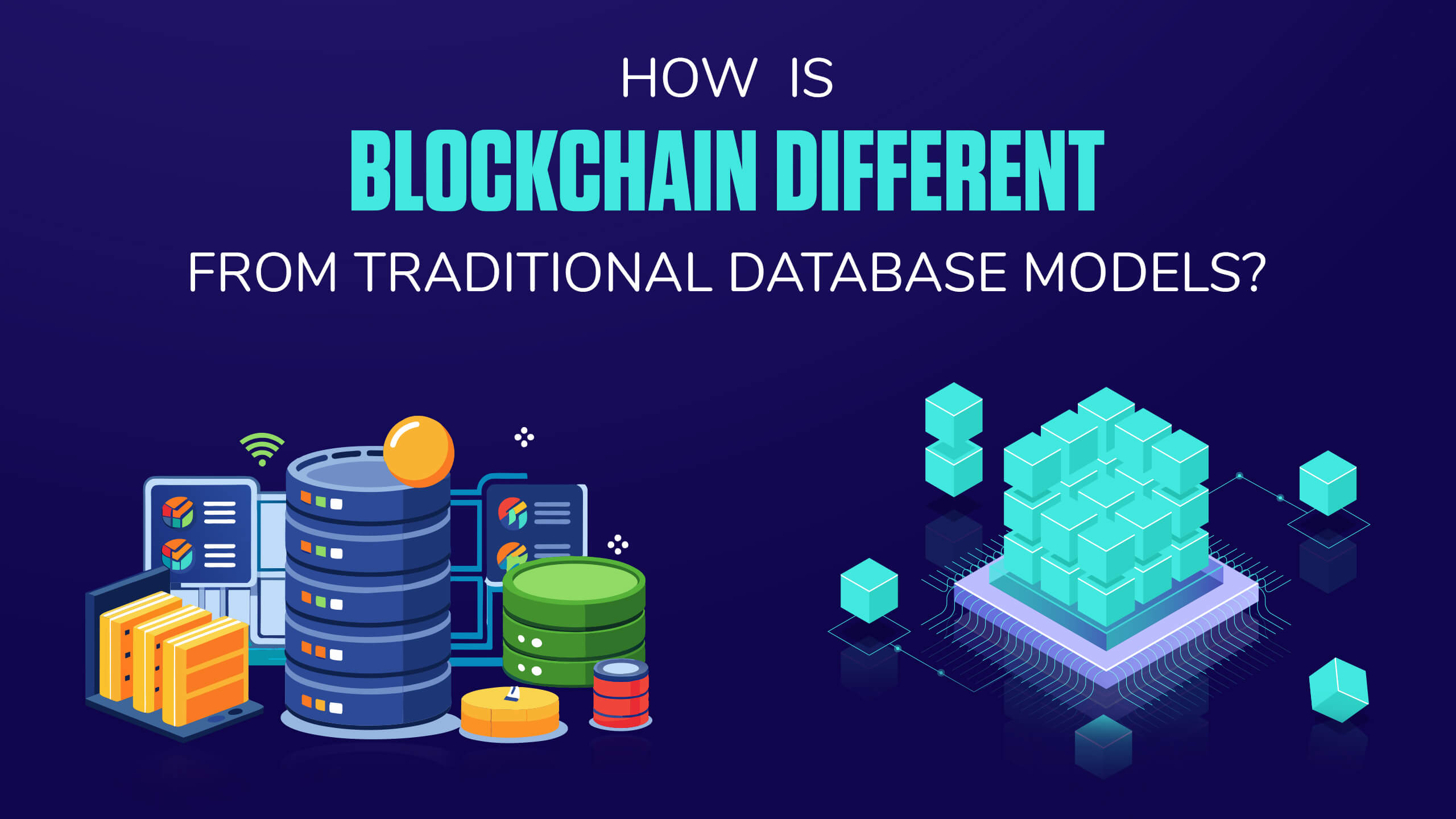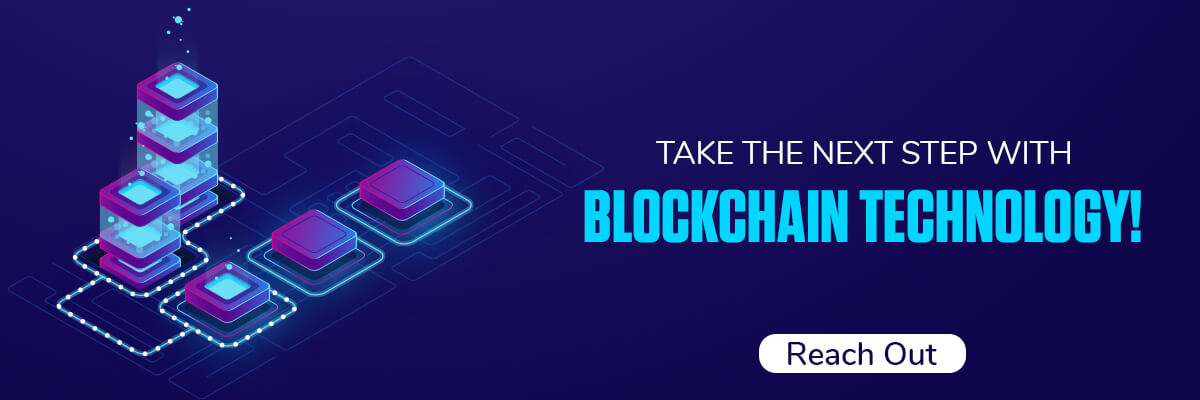With data becoming the core driver of every industry, businesses have started to look forward to using the best techniques for storing and securing humongous volumes of records. From customer information to sales orders, financial transactions, employee details, and several other such records must be stored and managed properly for numerous purposes. Businesses can leverage these datasets to enhance their analytical and decision-making capabilities. But recently, the concerns about how is blockchain different from traditional database models have put businesses in dilemma, hindering their freedom to choose the best model for storing and managing confidential information of diverse types.
Although blockchain was first introduced as a distributed ledger technology to facilitate digital monetary transactions, it has now found extensive use in data storage. Considering it to be similar to that of traditional database models will be a huge mistake from your end. After all, not knowing the differences between these two technologies in detail will hinder your decision-making ability. So, to help you choose the best storage model for your business data, we have compiled a detailed guide explaining the differences between blockchain and traditional database models.
Introducing Blockchain Model for Data Storage
As the name implies, blockchain is a ledger system where data is encrypted in the form of different blocks and added to a continuous chain through different forms of consensus protocols. You can consider it to be a long chain, comprising older blocks and new ones added with recent information. It is known to be one of the most innovative distributed ledger technologies, providing businesses with the much-needed competitive edge required for harnessing the true potential of data.
Fundamental Layers of Blockchain
To understand what blockchain is, let’s first get started by learning its fundamentals of operation.
1. Immutability: The blocks added to the blockchain are immutable, meaning the datasets stored in the blocks cannot be altered. It is achieved through the cryptographic hashing mechanism, which is an encryption technique for securing data and ensuring they cannot be modified or manipulated further.
2. Decentralization: One of the major factors that sets blockchain apart from the traditional database model is decentralization. It is a fundamental characteristic that defines the way multiple nodes or authorities are in control of the entire ledger. There is no centralized authority governing the operations or authorizing the addition of any new data block.
3. Transparency: Last but not least, blockchain technology offers a great deal of transparency to the users by ensuring they can have access to all the datasets stored in the ledger to date. However, they won’t be allowed to make any alteration to the stored information, thanks to the immutable characteristics of blockchain technology.
Working of Blockchain Technology
Now that we have discussed the fundamental architecture of blockchain ledgers, it’s time to understand their operations. With this, you will be able to see how is blockchain different from traditional database models in a new light and make the best decision for your business.
Blocks and Chains
The entire blockchain is made from several blocks, each having a specific set of transactions or information. These blocks are linked to one another using cryptographic hashes for optimal immutability and security. Whenever a new block needs to be added, all the involved nodes need to approve the action, thereby implementing the principles of decentralized operation.
Consensus Mechanisms
Whenever a new transaction has to be initiated on the blockchain, it should be validated for authenticity and other such details. This is where different network participants use consensus mechanisms to validate the transaction details and ensure there is no forgery or manipulative action. Several types of consensus protocols are used for transaction validation. For example, PoW, or Proof of Work, requires network participants to solve a specific mathematical puzzle to validate the transaction. Similarly, PoS, or Proof of Stake, can be used to validate transactions, provided the network participants have a stake in cryptocurrencies.
Smart Contracts
Smart contracts are self-executable computer programs deployed to the blockchain to automate different operations. They have predefined rules, which govern the operation and function of the smart contracts. A precise set of conditions is also computed, which once fulfilled will trigger the concerned operation, like completion of transactions, encryption of new blocks, and many more.
Major Challenges with Traditional Database Models
To understand how blockchain is different from traditional database models, it’s essential you know the challenges one usually encounters with the latter technology. Only then you will have the needed clarity to make a transparent decision.
1. Centralized architecture: Traditional databases are based on a centralized architecture, meaning only one entity or network participant will have complete control over the involved operations. Whether it’s validating any new transaction or encrypting the datasets, a single authority will have absolute control over the entire database model.
2. Single point of failure: A traditional database system will operate on a single central server, having a limited number of machines associated with the same for operations. In case the central server fails or suffers from an outage, the entire database will become inaccessible. Additionally, it will also threaten data integrity, resulting in business operation disruptions.
3. Lack of scalability: It’s not possible to scale the database operations on the go to suit the growing capacities of the business. In other orders, the centralized database model cannot sustain increasing data volumes of enhanced user traffic easily, which further restrains the capabilities of the business in handling huge datasets swiftly.
4. Data manipulation and forgery risks: The datasets stored in the conventional database model are subjected to manipulation and forgery risks. Anyone with access to the DB can change the stored details, thereby leading to data tampering and forged information. While strong encryption and security protocols can be implemented, the risks of data manipulation cannot be avoided completely.
Differences Between Blockchain and Traditional Database Models
Feature |
Blockchain |
Traditional database |
| Authority and control distribution | Blockchain is a form of distributed ledger technology, meaning both authority and control don’t rest with a single entity. Instead, these are distributed across multiple network participants, thereby achieving a decentralization architecture. | On the contrary, a traditional database is based on centralization. In other words, only a single authority will have superior control over the operations involved with the database, including transaction validation and authorization. |
| Consensus mechanisms | Whether it’s for validating a new transaction or agreeing to the state of the blockchain, the network participants use several types of consensus mechanisms or protocols. | Since the control and authority rest within the hands of a single entity, no modern or enhanced consensus mechanism is used. |
| Data distribution | One of the key characteristics of blockchain that sets it apart from the rest of database models is the data distribution technique. Here, all the datasets and information pieces are stored across multiple servers, known as nodes. | A single central server is used to control the database and store all types of datasets involved. The control is not delegated to other servers, which is why there are huge risks of database failures and outages. |
| Immutability | The transactions or datasets stored on the blockchain are immutable. In other words, no detail can be changed or altered once it is stored on the distributed ledger, regardless of whether the user has all the accesses or not. | If any user has write access to the database, he or she can easily make changes to any data stored on the conventional database owing to its mutable characteristics. |
| Workload distribution | Since multiple users are involved in controlling the operations associated with the blockchain ledger, the workload is distributed. As a result, it ensures higher efficiency and productivity in all the operations. | Only the single centralized authority will be responsible for completing all the operations to be performed on the database. As a result, the workload is huge, and it often results in inefficient and non-productive functions. |
| Scalability | One of the key features of blockchain technology is its scalability. It can be customized to store huge data volumes without any limit. Additionally, it can be scaled horizontally by adding new nodes to the network and allowing the server control to be distributed over a vast area. | A centralized database model cannot be scaled on the go to store increasing data volumes. In cases where the incoming user traffic escalates beyond the threshold limit, databases often experience system outages due to excessive load on the central server. |
| Performance | If we consider large-scale operations, blockchain is more apt because it can be scaled on the go and can suffice to the growing or dynamically changing business requirements. | On the other hand, a centralized database model often suffers from poor performance and inefficiency due to the striking absence of scalability and distributed workload architecture. |
Conclusion
In this article, we have shed light on how is blockchain different from traditional database models. While you now have clarity, implementing such an innovative and powerful distributed ledger technology cannot be achieved overnight. Instead, it requires extensive planning, deep domain knowledge, and technical prowess, which is where Web 3.0 India comes in. With our blockchain experts, you can migrate your existing centralized database to the decentralized and scalable blockchain ledger with ease.
 +91 95109 87700
+91 95109 87700 +44 20 3290 3710
+44 20 3290 3710




